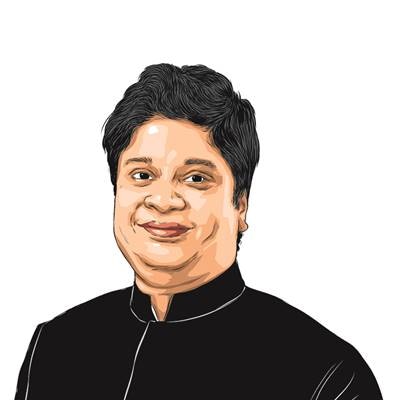Opinion The tragicomedy of the 80s
Jaane Bhi Do Yaaro was a comic distillation of its times....
It may be a matter of some injustice that the late Ravi Baswani,an actor of considerable talent and versatility,in a career spanning 30 years,is more often than not recalled only as the Jaane Bhi Do Yaaro star. But then,such is the recall power and iconic status of this low-budget dark comedy,27 years after its release.
Its staying power is perhaps second only to Sholay,but in many ways it is more remarkable. Sholay was after all,a smart looking,big budget movie produced by a prominent Bollywood banner (the Sippys) featuring some of the biggest stars of the early 70s (Sanjeev Kumar,Dharmendra,Hema Malini and Jaya Bhaduri),and two of the biggest stars of the future Amitabh Bachchan and Amjad Khan.
Consider on the other hand that Jaane Bhi Do Yaaro was a tacky low budget movie produced by the National Film Development Corporation of India,directed by the little-known Kundan Shah and starring Naseeruddin Shah,Ravi Baswani,Om Puri,Pankaj Kapoor and Satish Shah all struggling young actors at the time. Interestingly,despite its tremendous success, Jaane Bhi Do Yaaro never propelled either its director or its actors to the kind of mainstream stardom that one might have expected. Ironically,the career of Ravi Baswani (who beat his fellow cast members to a Filmfare award for best actor in a comic role for his performance in the film) never really took off even in the limited way that the rest of the casts did.
So how did a low budget movie with no iconic stars achieve such recall value in a country that produces hundreds of films a year? It was,of course,very funny,but that doesnt explain its staying power. What does explain it is its superb satirical depiction of the essential,timeless,human condition: supreme self-interest versus some moral/ethical anchor. What made the depiction particularly powerful was its setting: India of the early 80s.
In many ways,the early 80s were a period of directionless despair for the country. India was well past its idealistic period of socialism that had culminated in the disastrous Emergency. And yet,even after a period of the first non-Congress government at the Centre,there was no hope in sight. Indira Gandhi was voted back three years after she was voted out. The worst bits of Indias tryst with socialism licence raj,corruption and crony capitalism continued to hold sway. Economic liberalisation,opportunity and prosperity were a distant dream,even for a nascent middle class. Remember that for mainstream cinema this was also the time when Amitabh Bachchans anti-establishment angry young man character peaked in popularity,perhaps reflecting the mood of a somewhat frustrated nation.
Jaane Bhi Do Yaaros chief villains,as in many movies of the time,were the shady builders (Pankaj Kapoor as the murderous Tarneja and Om Puri as the bumbling Ahuja) and the corrupt municipal commissioner DMello (delightfully played,both dead and alive by Satish Shah). To add to the cynicism,even the media was depicted as acting in self-interest rather than public interest. The police as usual would collaborate with the bad guys. But there was no angry young man as the hero. Rather more realistically,the heroes Vinod and Sudhir (Shah and Baswani) were small-time entrepreneurs (setting up a photography business) with no business; India was still in its Hindu rate of growth phase.
The two young heroes with no work are hired by the editor of a magazine to photograph the corrupt dealings of the builders and the bureaucrat. Amidst all the hilarity,the two heroes who turn out to have a moral anchor are betrayed by the editor,fail to nail the corrupt builders and end the movie,framed,in prison. In another time,an unhappy ending may have killed the movies fortunes but in 1983 people bought the realistic ending with supreme self-interest clearly winning over morality.
But why does the movie still appeal to a generation that grew up in the more optimistic India of the 90s and later? For one,even optimistic India gets the associations of corrupt bureaucrats,shady builders (or is it miners now?),unscrupulous media (paid news?) and do-gooders who land in trouble (anyone remember Manjunath?). In that sense,the films content can transcend the 27 years that have passed quite easily.
There is likely to be one key difference though. In 1983,the average cinema-goer would perhaps have empathised closely with the two heroes and their tangle with the establishment. In contrast,in 2010,the average cinema-goer can perhaps only sympathise with the heroes given that it is perfectly possible to prosper without seeking favour from or getting entangled with a small cabal of crooks.
Thats what liberalisation and globalisation have changed. They may have even enabled the gifted Baswani to find a better market for his talent than that offered by the India of the early 80s.
The writer is a senior editor withThe Financial Express
dhiraj.nayyar@expressindia.com




